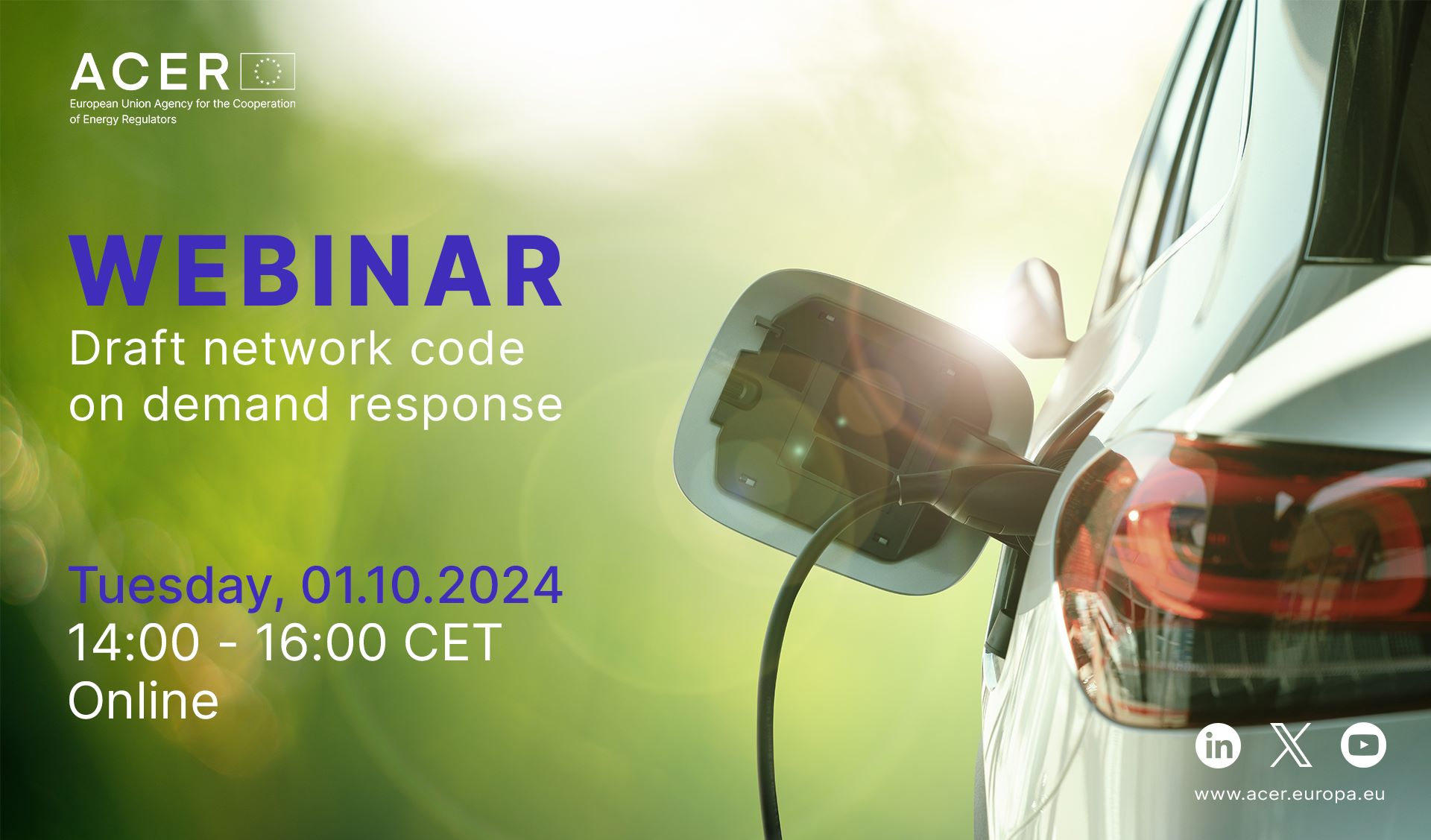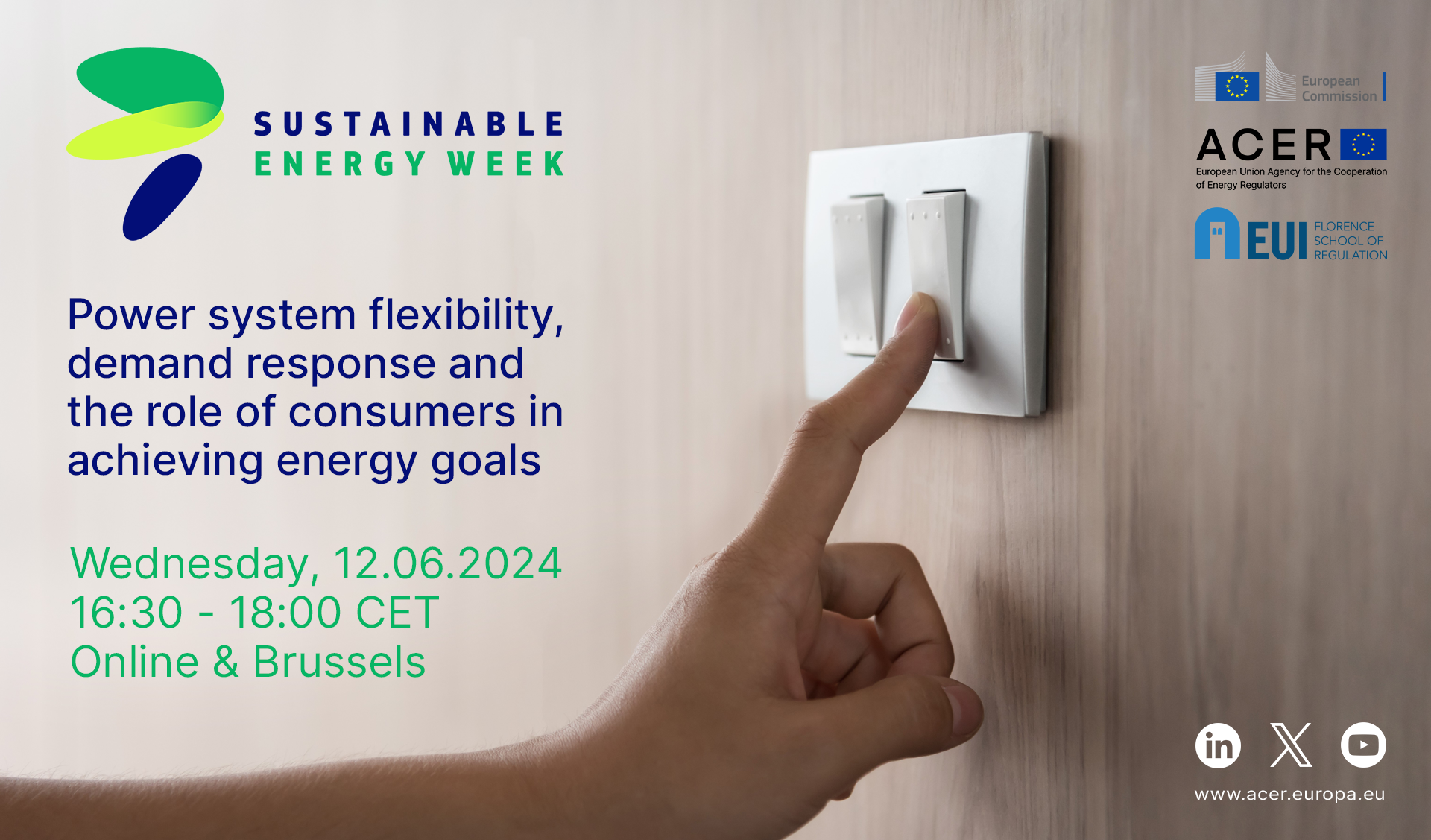ACER webinar: draft network code on demand response



ACER publishes today a consultancy study on the expected social welfare benefits of implementing co-optimisation in the day-ahead coupling algorithm as compared to the current electricity market design.
The study also examines which benefits can be achieved in an intermediate market design known as market-based allocation of cross-zonal capacity. This design is already in use in the Nordics and is expected to be implemented in other parts of the EU in the coming years.
The study was commissioned in October 2023 to support the ongoing decision-making process on the amendment of the methodology for the price coupling algorithm and the continuous trading matching algorithm.
Amending the day-ahead coupling algorithm is necessary to enable a co-optimised allocation of cross-zonal capacity for the exchange of balancing capacity or sharing of reserves. By allocating cross-zonal capacity where its market value is the highest, co-optimisation facilitates the integration of the balancing capacity markets and allows for a more efficient use of cross-zonal capacity.
Unlike the market-based allocation process, which allocates cross-zonal capacity for the exchange of balancing capacity or sharing of reserves before the day-ahead energy auction, co-optimisation clears both markets simultaneously, thus allowing to fully capture their interdependencies.
The study concludes the following:
ACER opens today a public consultation to collect stakeholders’ insights on the study’s findings. You have until 19 June 2024 to submit your views.
Register for ACER’s webinar on 10 June 2024 to learn about the main findings of the study, including insights on the design of bids that would allow to best capture the interactions between day-ahead and balancing capacity markets.
The outcomes of the consultation and webinar will inform ACER’s decision-making on the proposed amendments to the methodology, which is scheduled to be finalised by early autumn 2024.

On Thursday 20 June, ACER will launch a public consultation to gather stakeholders’ views on the benefits and drawbacks of introducing voluntary templates for Power Purchase Agreement (PPA) contracts in the EU energy market.
Power Purchase Agreements (PPAs) are contractual arrangements between electricity producers (frequently renewable energy generators) and buyers. By providing renewable electricity at mutually agreed rates, these contracts foster stability for both parties and promote the adoption of renewable energy sources (RES).
In accordance with the EU Regulation to improve the Union’s Electricity Market Design (EMD), which has been adopted by the Council of the EU on 21 May 2024, Member States shall implement policies and measures to promote the uptake of PPAs by removing unjustified barriers and disproportionate or discriminatory practices. This should contribute to improving energy pricing predictability and help meet national climate and energy targets.
The EMD mandates ACER to assess the need to develop and issue voluntary templates for PPAs. As ACER assessment must reflect the needs of the different parties involved, it is key that this is done in close coordination with relevant institutions and stakeholders.
For this reason, ACER will run a public consultation (from 20 June to 18 July 2024) to gather inputs from interested stakeholders and ensure an informed and inclusive decision-making process.
The public consultation will run from 20 June to 18 July 2024.
As a follow up, ACER will evaluate the feedback received in the consultation and the conclusions reached by the consultative expert group established in May 2024.
If the assessment (expected in Autumn 2024) highlights the need to develop templates for PPA contracts, ACER, together with all Nominated Electricity Market Operators (NEMOs), will start the process in Winter 2024.


In the context of the ongoing revisions of the European grid connection network codes, ACER will consult with stakeholders (during summer 2024) to collect views on ACER’s concrete amendment proposals to the network code on grid connection requirements for high voltage direct current systems and related power park modules (NC HVDC).
Network codes are binding rules governing connection requirements to the electricity networks in an effective and transparent manner. The codes are key for ensuring the safety of system operation and the efficiency of the EU's power grid.
There are three electricity grid connection network codes:
The electricity grid connection codes were established in 2009, with the HVDC Regulation entering into force in 2016. Important developments to decarbonise the European energy and transport sectors happened since then:
The revisions to the NC HVDC aim to:
To inform its drafting of the amendment proposal to the NC HVDC, ACER will:
